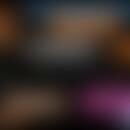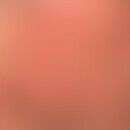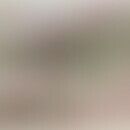Synonym(s)
HistoryThis section has been translated automatically.
DefinitionThis section has been translated automatically.
Rare, autosomal recessive variant of oculocutaneous albinoidism with leukocytic immunodeficiency, consecutive susceptibility to infection, hepatosplenomegaly, generalized lymph node enlargement, and impaired melanogenesis (the syndrome is also listed under"tumor-associated genodermatoses").
You might also be interested in
EtiopathogenesisThis section has been translated automatically.
This is caused by autosomal recessive inherited defects of the so-called CHS1 gene (Chediak-Higashi gene 1 = LYST gene/lysomal trafficking regulator gene; gene locus: 1q42.1-q42.2). The LYST gene encodes a protein that regulates intracellular protein trafficking in endosomes and may be involved in pigmentation. It regulates the cleavage of intracellular vesicles such as lysosomes (Holland P et al. 2014). In cytotoxic T cells and natural killer (NK) cells, it plays a role in regulating the size, number and exocytosis of lytic granules. The mutation in this gene leads to a disruption of lysosome biogenesis with lysosomal giant granules. In melanocytes, this gene defect leads to giant melanosomes with defective localization of melanosome-specific proteins(tyrosinase/TYRP1) in large vesicular structures of the cytoplasm. As a result of the impaired function of the immune cells, a primary immunodeficiency syndrome also occurs (Bowman SL et al. 2019).
ClinicThis section has been translated automatically.
Signs of immunodeficiency such as pyoderma or respiratory tract infections are already evident in the first months of life.
Skin symptoms can be the first symptom of this systemic disease.
Furthermore, there are neurological currents with peripheral neuropathies, balance disorders and cognitive impairment.
Partial oculocutaneous albinism is regularly found.
Less frequently, lymphohistiocytosis develops.
LaboratoryThis section has been translated automatically.
Blood count: Characteristic granulation of the leukocytes (giant lysosomes) in the blood smear; neutropenia, among others
HistologyThis section has been translated automatically.
Differential diagnosisThis section has been translated automatically.
TherapyThis section has been translated automatically.
Bone marrow transplantation is the only possible curative therapy for the leukocyte defect. Use of high doses of aciclovir, gamma globulin, vincristine, s.a. cytostatics, prednisolone in lymphoproliferative phases is described. Splenectomy may be helpful if therapy is resistant. High doses of ascorbic acid (1 g/day) prophylactically against susceptibility to infections.
Otherwise: photoprotective agents (e.g. Anthelios, Eucerin Sun, regular eye monitoring and sunglasses, avoidance and remediation of infections.
Progression/forecastThis section has been translated automatically.
LiteratureThis section has been translated automatically.
- Al-Khenaizan S (2003) Hyperpigmentation in Chediak-Higashi syndrome. J Am Acad Dermatol 49(5 Suppl): S244-246
- Bowman SL et al. (2019) The road to lysosome-related organelles: Insights from Hermansky-Pudlak syndrome and other rare diseases. Traffic 20:404-435.
- Chediak M (1952) Nouvelle anomalie leucocytaire de caractere constitutionnel et familial. Rev Hemat 7: 362-367
- Hadda E et al. (1995) Treatment of Chediak-Higashi Syndrome by allogenic bone marrow transplantation - a report of 10 cases. Blood 85: 3328-3333
- Harfi HA et al. (1992) Chediak-Higashi syndrome: clinical, hematologic, and immunologic improvement after splenectomy. Ann Allery 69: 147-150
- Higashi O (1954) Congenital gigantism of peroxidase granules: the first case ever reported of qualitative abnormity (sic) of peroxidase. Tohoku J Exp Med 59: 315-332
- Holland P et al. (2014) LYST affects lysosome size and quantity, but not trafficking or degradation through autophagy or endocytosis. Traffic 15:1390-1405.
- Mallory SB et al. (1990) Congenital immunodeficiency syndromes with cutaneus manifestations I. J Am Acad Dermatol 23: 1153-1158
- Sepulveda FE et al. (2015) LYST controls the biogenesis of the endosomal compartment required for secretory lysosome function. Traffic 16:191-203.
- Ward DM et al. (2002) Chediak-Higashi syndrome: a clinical and molecular view of a rare lysosomal storage disorder. Curr Mol Med 2: 469-477
- Westphal A et al. (2017) Lysosomal trafficking regulator Lyst links membrane trafficking to toll-like receptor-mediated inflammatory responses. J Exp Med 214:227-244.
Incoming links (12)
Dental diseases, skin changes; Familial cancer syndrome; Griscelli syndrome; Hereditary thrombocytopenia; Lysosome; LYST Gene; Neurocutaneous syndromes; Neutropenia; PID; Piebaldism; ... Show allOutgoing links (10)
Aciclovir; Albinism (overview); Albinoidism, oculocutaneous; Cytostatics (overview); Familial cancer syndrome; Light stabilizers; LYST Gene; Tyrosinase; TYRP1 Gene; Vincrist;Disclaimer
Please ask your physician for a reliable diagnosis. This website is only meant as a reference.




